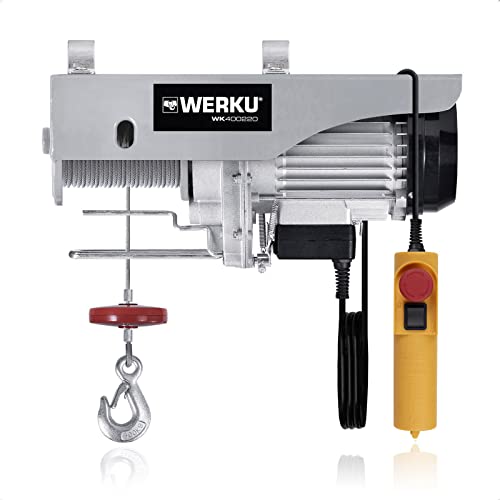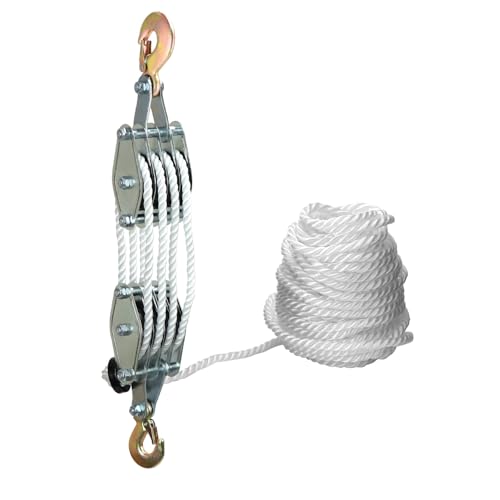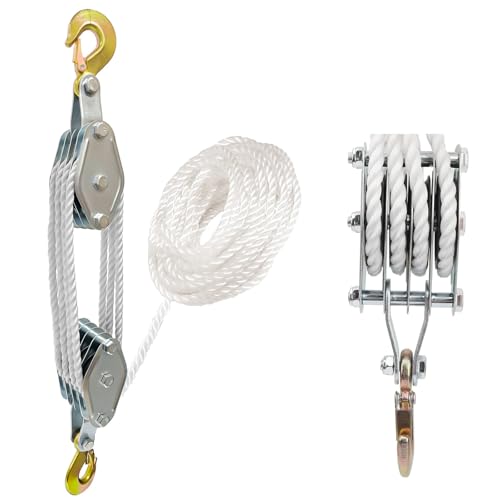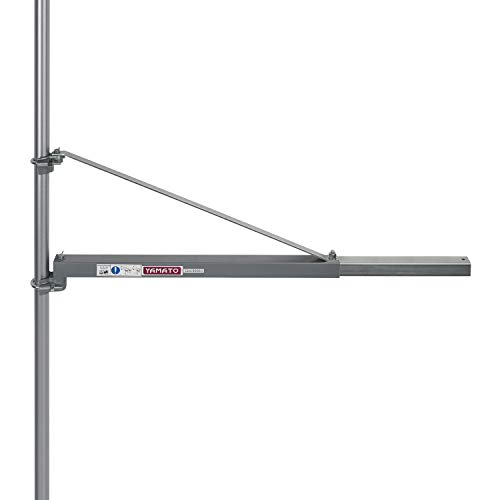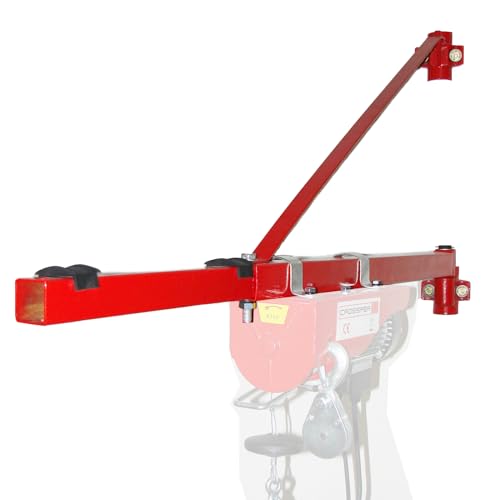
Best Professional Hoists for the Money – Complete Guide for DIYers
As a content creator at Bricoplan, passionate about DIY, renovations, and space transformation. With a career that includes experience in the financial sector, as a renovation project advisor at Leroy Merlin, and as a real estate agent in Barcelona, Maresme, and Vallès, today I want to share with you my vision and experience in the selection of hoists professionals quality priceIn this article, I'll show you everything you need to know to choose the best professional hoist for your needs and budget, analyzing everything from electric, manual, and pneumatic hoists to lever and chain hoists.
Hoists are essential tools in lifting and pulling projects, both in renovations and construction, as well as in home DIY projects. Their versatility and efficiency allow you to safely lift heavy loads, saving you time and effort. Furthermore, today, on platforms like Amazon, finding professional hoists at a good price with more than 4 stars is a guarantee of quality.
Throughout this article, we will address key aspects such as:
- Different types of hoists and their applications.
- Criteria for evaluating quality and price.
- Comparisons and reviews of featured products on Amazon.
- Pros and cons of using professional hoists.
- Frequently asked questions about these devices and suggestions for complementary projects.
What is a Hoist and why is it essential?
A hoist is a mechanical device designed to lift and move heavy loads using lever action or traction via cables and chains. There are different types of hoists depending on the power source (electric, manual, or pneumatic) and the type of application:
- Electric Hoists: Ideal for continuous work where speed and efficiency are required.
- Manual Hoists: Practical solution for smaller projects and in situations where electricity is unavailable.
- Lever Hoists and Tires: Lever hoists are especially useful in industrial environments or for specific jobs that require control and precision.
- Chain Hoists: They operate using a gear system and a chain that, when pulled, allows objects to be lifted with less effort. Chain hoists are very common in workshops, construction sites, and warehouses due to their ability to lift considerable weights and their ease of use.
Knowing these differences will allow you to choose the best quality-price professional hoist for each task and, thus, optimize your DIY projects or complete renovations.
Types of Hoists and Their Applications
Electric Hoists
Electric hoists are very popular among professionals and DIY enthusiasts.
Main advantages of electric hoists
- Fast and effortless lifting.
- Integration with automated systems and advanced security.
- Greater load capacity.
Using an electric hoist is especially suitable for projects handling loads over 500 kg, and when you're looking for time efficiency. On Amazon, you'll find highly rated models (more than 4 ⭐⭐⭐⭐) that guarantee durability and safety.
Manual Hoists
Simplicity and low cost make manual hoists an attractive option for home projects.
Manual Hoist Applications:
- Minor repairs.
- Home renovation projects.
- Situations where a reliable source of electricity is not available.
Although they require more physical effort, they are ideal for home use and for DIY enthusiasts on a budget.
Lever and Pneumatic Hoists
These pneumatic and lever hoists are designed for specific applications in industries where a combination of precision and manual control is required.
Features of Lever Hoists and Tires:
- Robust and secure mechanism.
- High load capacity with fine adjustments.
- Widely used in construction and industrial assembly areas.
Chain Hoists
For projects requiring a lifting system in tight spaces and with high mobility, chain hoists are the perfect choice.
Benefits of Chain Hoists:
- Compact design.
- Flexibility in installation.
- Controlled and gradual elevation.
It's vital to consider maintenance and frequency of use to ensure its durability; on average, a chain hoist has a long lifespan as long as it's properly maintained.
Best-Selling Hoist Support Arms
- Nominal load: 300 kg at a length of 110 cm and 600 kg at a length of 75 cm.
- Maximum length: 110 cm.
- Rotation angle: 180º.
- High Load Capacity: Our hoist support arm effortlessly supports weights up to 600 kg (1322.78 lbs)…
- Industrial Grade Material: Made with industrial grade carbon steel, our lift arm features…
- Adjusts to your needs: Enjoy the flexibility of 180-degree angle adjustment with this arm support.
- Rotating arm staplers, up to 600 kg max, max. throat 1100 mm (then 250 kg), extendable, GS, (minimum 45 mm diameter…
- Rotating arm staplers, up to 600 kg max, max. throat 1100 mm (then 250 kg), extendable, GS, (minimum 45 mm diameter…
- ► Quick and easy assembly
- ► Possibility of mounting on scaffolding
- ► Possibility of direct wall mounting
- For hoists and winches
- Max load 300 – 600 kg
- Max reach 1100 mm
Criteria for Evaluating Professional Hoists Quality Price
Choosing a hoist isn't as simple as comparing prices. There are technical and practical criteria you should consider:
- Load capacity: Consider the maximum weight you can lift. Professional hoists typically exceed 500 kg.
- Energy source: Evaluate whether you need an electric model or if a manual one will suffice for your task.
- Lifting speed and efficiency: Electrical equipment offers greater speed, but can be more expensive.
- Security and certifications: Look for products that have the necessary certifications and automatic locking and braking systems.
- Ergonomics and ease of use: Equipment maneuverability is essential for extended work.
- Compatibility and accessories: Some tools are compatible with different mounting systems or have accessories that make them easier to install and use.
- Reviews and ratings: Prioritize products with good reviews on Amazon (4 stars or more) to ensure product reliability.
My experience at Leroy Merlin and in the real estate sector has taught me that investing in quality tools translates into less hassle and greater safety. The right choice of a professional hoist can make all the difference in the successful completion of any renovation project.
Pros and Cons of Professional Hoists
To help you quickly visualize the advantages and disadvantages of using professional hoists, I present this table with an analysis based on opinions and real experience:
| Pros | Contras |
|---|---|
| High load capacity | High initial price |
| Greater safety when lifting | Periodic maintenance required |
| Saving time on projects | Installation can be complex |
| Robust and durable design | Requires adequate space |
| Easy integration with modern systems | Variety of models can be confusing |
| Multiple accessory compatibility | Some models are heavy |
| Excellent for professional projects | Not always suitable for home use |
| Warranty and after-sales support | Low supply in certain capacities |
FAQs – about Professional Hoists
Below, I've answered some of the 10 most common questions that arise, so you have a complete and well-documented guide:
What are the 3 types of hoists?
The main ones are: Electric hoists Manual hoists Pneumatic/lever hoists
Which is better: a 2-post or 4-post hoist?
The choice depends on the use and the load being lifted. Four-post lifts offer greater stability and are designed for heavier loads, while two-post lifts may be sufficient for less demanding jobs.
How to choose a hoist?
Evaluate the load capacity, ease of use, safety certifications, and user reviews. It's crucial to select a model with high ratings on online shopping platforms.
What is the life expectancy of a chain hoist?
With proper maintenance, this equipment can have a long lifespan. It's recommended to follow the manufacturer's instructions to maintain optimal performance.
Which is better, a chain or cable hoist?
Both have advantages: Chain hoists are generally more compact and easier to handle in tight spaces. Wire rope hoists can be more robust in certain industrial environments. The choice will depend on the operating environment and personal preferences.
What maintenance do professional hoists require?
Performing periodic checks, lubricating moving parts, and following the manufacturer's instructions are recommended practices to prolong their useful life and ensure safety at work.
Are electric hoists safe for professional use?
Yes, as long as certified equipment is purchased and properly maintained, electric hoists are very safe and effective for professional projects.
Can I use a hoist in home DIY projects?
Absolutely. Manual hoists or even some low-capacity electric hoists can be very useful tools for home improvement projects.
Recommended Bricoplan Articles
I recommend reading the following 7 complementary entries, which are naturally linked:
- Home Repairs Everyone Should Know How to Do
- Transform Your Home's Entrance with Custom Doormats
- Complete DIY Safety Guide
- How to Organize Your DIY Workshop at Home
- How to Repair Cracks in a Wall: Step-by-Step Guide
- 15 Basic DIY Tricks That Will Transform Your Home
- How to Make a Wooden Bench with Free Plans
In addition, I offer 7 additional articles aimed at strengthening your knowledge of home DIY, interior design, and tools:
- How to Keep Your Chainsaw in Perfect Condition
- Dewalt DCK211D2T QW Kit: Pro Tools
- The 5 Best Electric Screwdrivers
- Best Electric Drill Quality Price of the year
- Technology Revolutionizes the World of DIY
- The 7 Best Electric Generators on the Market
- The 6 Best Garden Tools for Professionals
Conclusions and Justification
After a thorough analysis of the different options on the market, it is clear that investing in a professional hoist Proper use is crucial to ensuring efficiency, safety, and success in DIY and renovation projects. Experience and positive product reviews on Amazon (over 4 stars) confirm that, while the initial investment may be higher, the durability and time- and effort-saving advantages justify the expense.
The main reasons that support my preference are:
- Quality and safety: Certified and guaranteed models demonstrate high quality, minimizing risks.
- Price-Quality Ratio: The selected products offer a perfect balance between performance and cost, allowing for professional projects without overspending.
- Ease of use and versatility: Whether for home projects or in industrial settings, there's an option for every need: from manual hoists for small repairs to electric hoists for continuous, heavy-duty work.
- Proven efficiency on platforms like Amazon: The experience of thousands of users supports the effectiveness and durability of the equipment presented.
With this guide, I hope I've cleared up any doubts about which hoist to choose and how to integrate it into your DIY and renovation projects. The key is to consider both the technical aspects and your personal and professional needs, so that each tool becomes an investment that adds value to your projects.
Personal Reflection
As a passionate DIYer with extensive experience in renovations and interior design, I've learned that every detail counts when it comes to transforming a space. My time working for renowned companies and my direct involvement in the real estate industry have taught me to value the quality and functionality of tools. I encourage you to try the hoists presented in this guide, experiment with them, and, above all, share your experiences so that together we can continue creating unique and safe homes and spaces.
Remember, at Bricoplan we want to inspire, guide, and support you every step of the way. Don't hesitate to leave your comments, share this article on social media, and subscribe to our newsletter to stay up-to-date on the latest trends in DIY, interior design, and renovations.
With this information, you'll be better equipped to make informed decisions and take your projects to the next level. Let's get to work, and may your projects be as solid as a good hoist!




